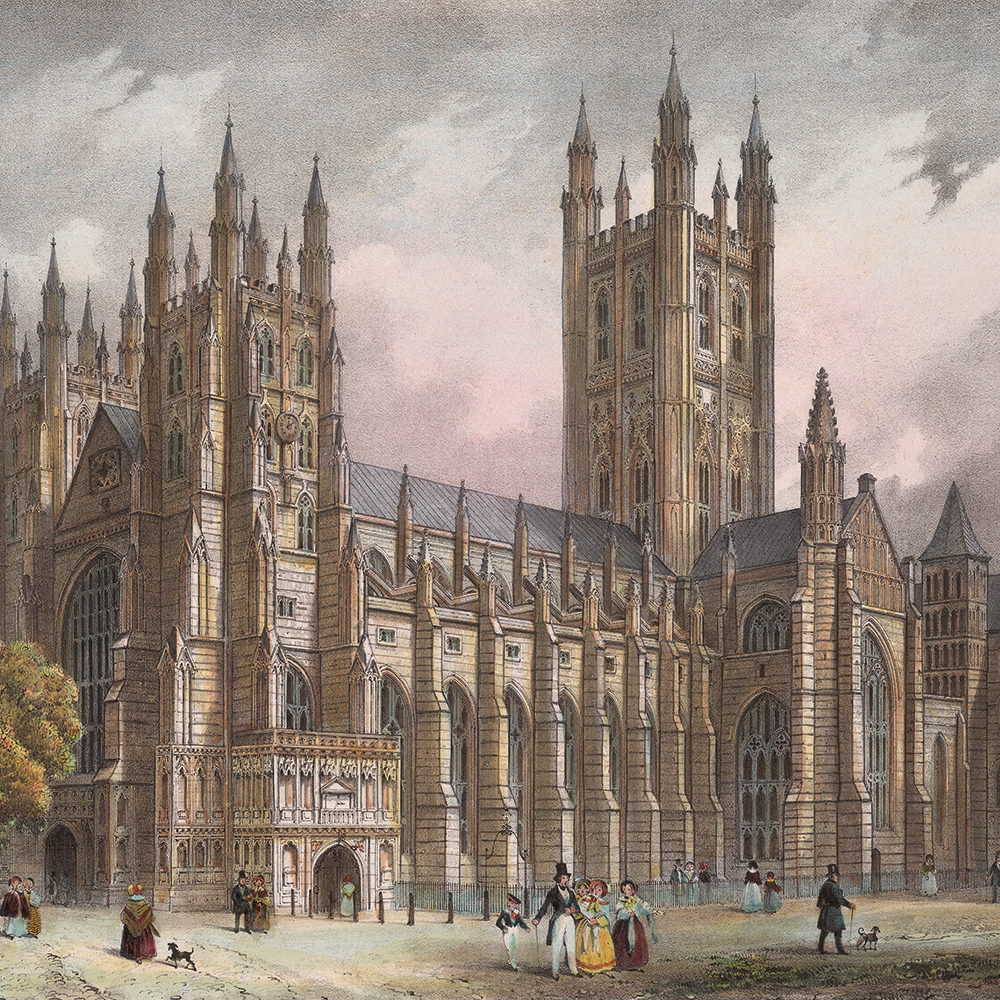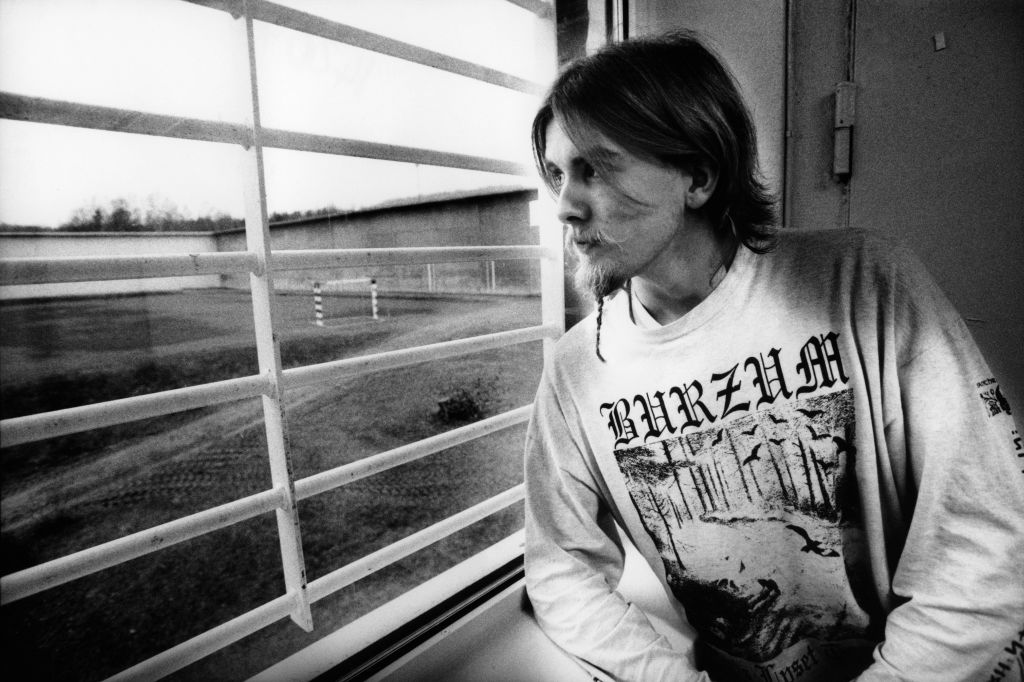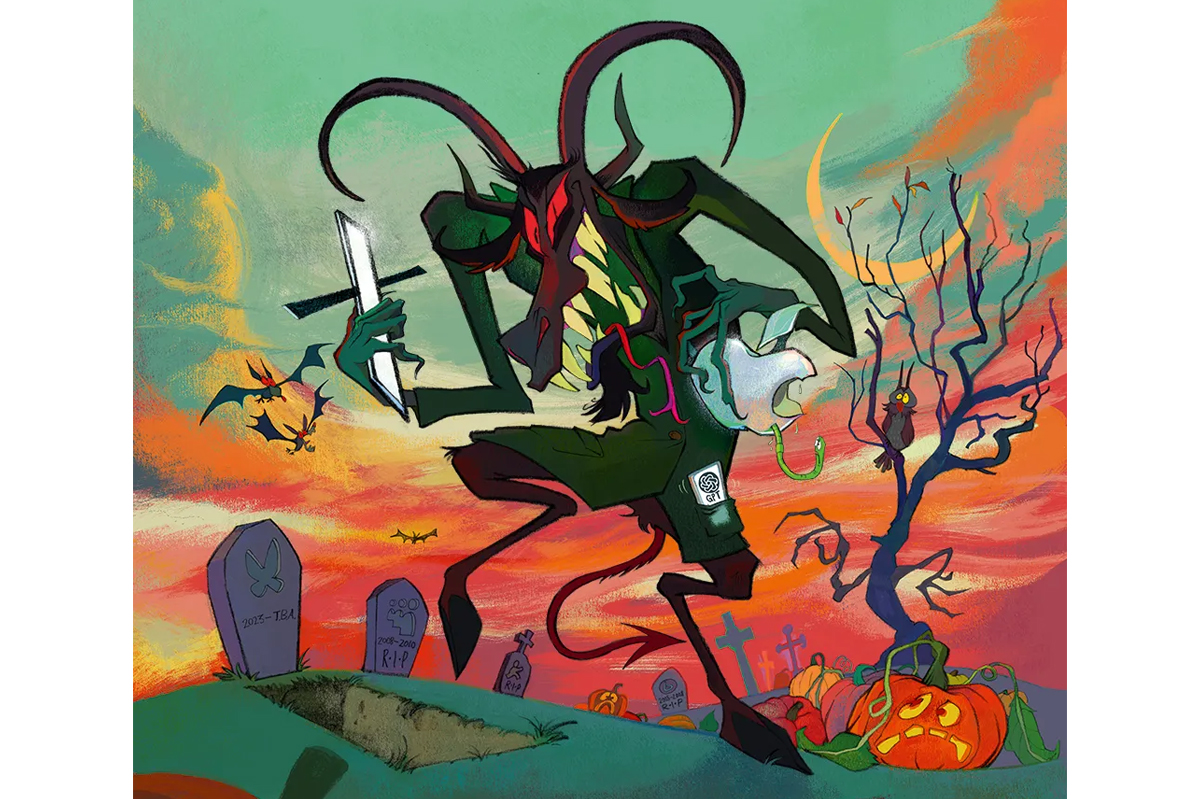In Philip Larkin’s 1954 poem “Church Going,” the narrator walks into a deserted English country church, and observes that it isn’t up to much. Larkin writes that there is “a tense, musty, unignorable silence/ Brewed God knows how long,” feels a sense of “awkward reverence” and, on the way out, “Reflect the place was not worth stopping for.” It is one of the great vignettes of church-crawling, as the practice is generally known – wandering into an empty ecclesiastical space, not being wildly impressed and strolling out again, unblessed by the visit.
Yet for Larkin, that it will be “A shape less recognizable each week/ A purpose more obscure” is a tragedy, even for a non-believer. Even this second or third-rate building, in his eyes, merits the recognition that “A serious house on serious earth it is,” and the universal desire to embrace religion will be inevitable, “Since someone will forever be surprising/ A hunger in himself to be more serious.” In other words, “the twitch upon the thread,” as Evelyn Waugh wrote of the pull of Catholicism, is more powerful than any carefully (or carelessly) reasoned defense of atheism, even if we are constantly being told that belief in a Judeo-Christian deity is an anachronism and that we should instead embrace Allah, Buddha or Jeff Bezos, depending on our particular view of divinity.
Butler-Gallie has a parish in Charlbury, many Americans’ favorite place in the Cotswolds
These two new books deal with religion, and its works, in wholly different but pleasingly complementary fashions. Michel-Yves Bolloré and Olivier Bonnassies’s God, the Science, the Evidence has already been a huge international hit. It purports to provide a scientific explanation for the existence of God, and Bolloré and Bonassies come armed with an impressive selection of names in the scientific field, most notably Nobel Prize-winning physicist Robert Wilson, who says of the book “if the universe had a beginning, we cannot avoid the question of creation.” All very true. Yet, for my money, Fergus Butler-Gallie’s careful examination of Christianity, told through the narratives of 12 churches in different parts of the world, offers a more humane and richer examination of religious faith. If there is any justice, this should be his breakout book in the United States.
Butler-Gallie has written three books before, a couple of witty anecdotal histories of priests such as himself and a memoir, Touching Cloth, and has established a name for himself in his native Britain as an unusually wise and perceptive commentator on ecclesiastical matters high and low. He was one of the first clergymen to call for the resignation of the disgraced Archbishop of Canterbury Justin Welby and, not long after that, the prelate’s head duly rolled. When he isn’t writing books or intervening in church business, Butler-Gallie has a parish in Charlbury, many Americans’ favorite place in the Cotswolds: his local pub, the Bull, has managed to bridge the gap between Democrats and Republicans by playing host to both Kamala Harris and J.D. Vance (separately) in recent months.
Butler-Gallie includes his own parish church, St. Mary’s, in the book’s epilogue, and as he writes of his discoveries, “I have learned that churches have the infinite capacity to surprise.” Of the dozen structures that he includes, all of them have elements of the unexpected, whether it’s the famous (St. Peter’s in Rome; Canterbury Cathedral in England; the Church of the Nativity in Bethlehem) or the lesser-known. I certainly wasn’t familiar with the Kirishitan Hokora church in Kasuga, Japan before I read Twelve Churches, but Butler-Gallie writes extremely well about the way in which this small, remote basilica became redolent of the early reach of Christianity into Japan in the 17th century, where the faith was conducted in great secrecy due to the likelihood of persecution. It is a mark of his book’s intellectual reach and curiosity that this then segues into a comparison with St. Nicholas Church in Aberdeen and a conversation with The Spectator’s British editor, Michael Gove.
Twelve Churches is clearly aimed at a wide international readership and American readers are likely to be particularly fascinated by the two chapters on the varying kinds of worship their country has produced. The ninth chapter focuses on the site of the First Meeting House in Salem, Massachusetts, where Butler-Gallie writes about the arrival of Christianity in the US in 1628, and then the intrinsic difficulties that arose when the doctrine of purity that was so key to the early settlers became compromised by the supposed outbreak of witchcraft.
The events in Salem will be familiar to many thanks to Arthur Miller’s The Crucible, but Butler-Gallie places the events of 1962 in intelligent and fresh context by arguing that we should not sneer at the mass panic that was engendered as the primitive workings of a nascent society, but instead to look at the way in which witchcraft was seen as part of the fabric of faith. As he writes, “the very natural and the supernatural, the deeply irrational and the cold systematics of legality all clashed together in a heady brew which became a byword, both then and since, for a community turning itself inside out in the quest to be pure.”
It is a different kind of purity that he explores when he heads to the 16th Street Baptist Church in Birmingham, Alabama. It is here that Butler-Gallie shifts from closely detailed and well-written religious history and into more unsettling social territory. The church, with its African-American congregation, was the victim of a Ku Klux Klan bombing on September 15, 1963, which killed four young girls attending Sunday School there. The event would come to galvanize the Civil Rights movement nationwide.
Yet it is also undeniably the case that if God would allow such an atrocity to occur, and take the lives of innocent girls – in an attack where it took years to bring the perpetrators to justice, so strict was the code of omertà in Alabama’s white community – then questions about the fallibility (or worse) of the deity have to be asked.
Twelve Churches is a hugely accomplished and endlessly readable book, rich in detail
Although Butler-Gallie is too nuanced a writer to make such an observation, the kind of Christianity currently practiced by the African-American community is more elemental and vital than that pursued by urban white congregations, with far greater emphasis on the physical presence of Jesus expressed through music and charismatic preaching. Therefore the attack on the church – which continues to thrive to this day – was less a motiveless atrocity and more a means of bringing together the community, which finds its parallel in Butler-Gallie’s examination of how the early Christians in Rome were galvanized, rather than dispersed, by the martyrdom of St. Peter.
Twelve Churches is a hugely accomplished and endlessly readable book, rich in historical and ecclesiastical detail. If it has flaws, they are that there is such an accumulation of this detail that at times it becomes overwhelming. I read Butler-Gallie’s previous book in an afternoon, but this took a week of close attention. Certainly, I could have done with more humor – it isn’t that it’s po-faced, but given how witty a writer Butler-Gallie is, a few more laughs would have been appreciated. Yet this is a significant achievement in every regard, and represents its youthful author’s successful application to join the big leagues of historical biography, along with the likes of Simon Schama and Ron Chernow. This is a wise and humane volume that should appeal to everyone, of all faiths and none.
Late in the book, Butler-Gallie writes of perhaps the world’s best-known atheist, Richard Dawkins, that he has shifted from straightforward contempt for religion toward an understanding of faith, even if he is not (yet) a practitioner of it. In Dawkins’s own words, “I like to live in a culturally Christian country, even if I don’t believe a single word of Christian faith.” I suspect that he would find both Twelve Churches and God, the Science, the Evidence highly worthwhile. In the case of the latter, Bolloré and Bonnassies have marshaled an impressive display of factual information – and a generous number of experts – to make up for some of the book’s loopier forays into speculative territory.
But they omit any sense of what the point of religion might be if the existence of a deity can be proved beyond debate. The reason why the Gospels, in particular, remain so vital and so fascinating is that the figure of Jesus that emerges from them is rich in appeal and interest, a man (or son of God) who can announce, with heroic individualism writ large, “I am the way, the truth and the life.”
Larkin, you feel, would have observed the appearance of Christ with muted skepticism, and Bolloré and Bonnassies would have rushed to weigh and measure him. It is the greatest compliment I can pay Butler-Gallie, on the evidence of his thoughtful and wise book, that he – a man of God as he is – would be the only one to sit down and learn from him, instead.
This article was originally published in The Spectator’s September 29, 2025 World edition.























Leave a Reply